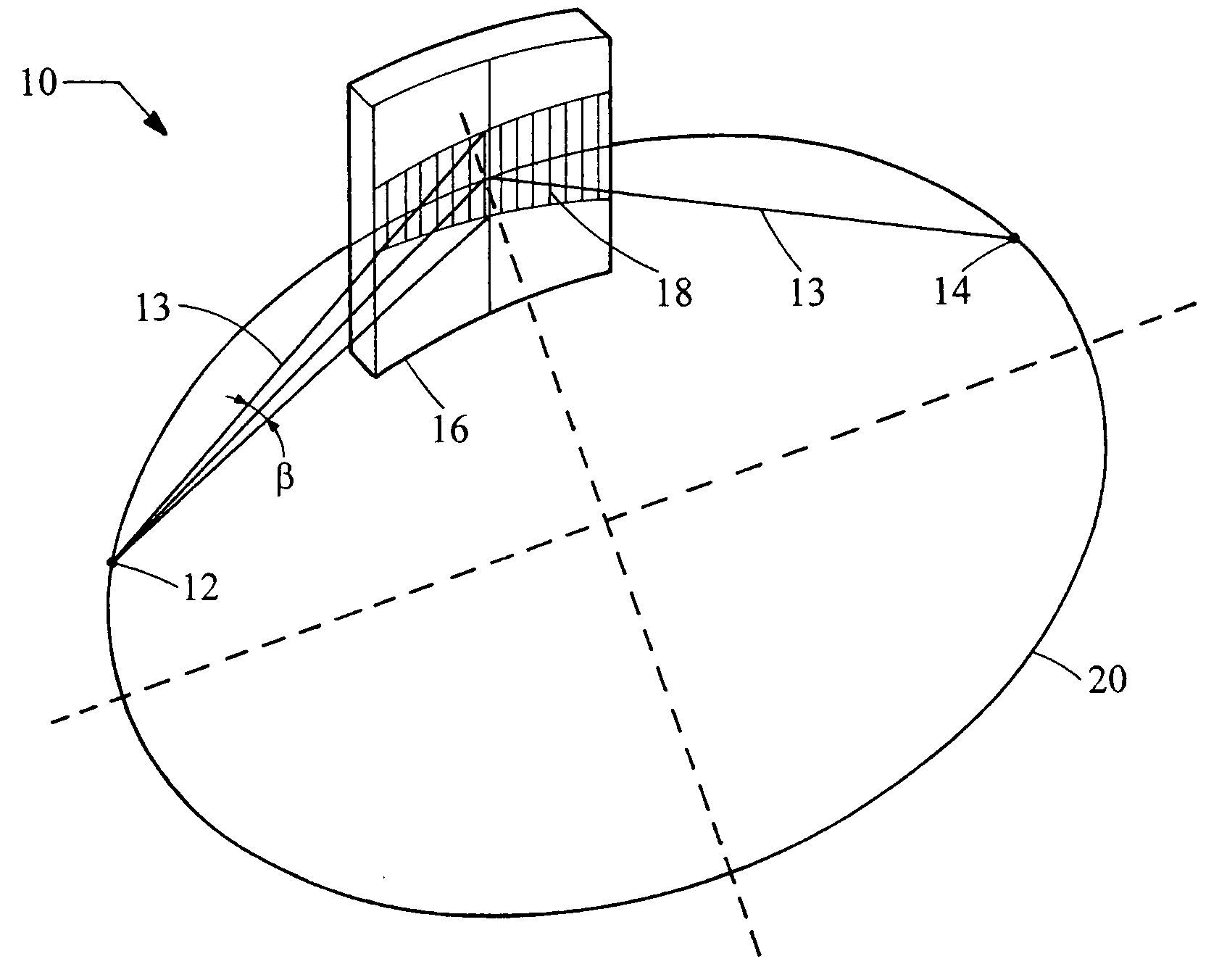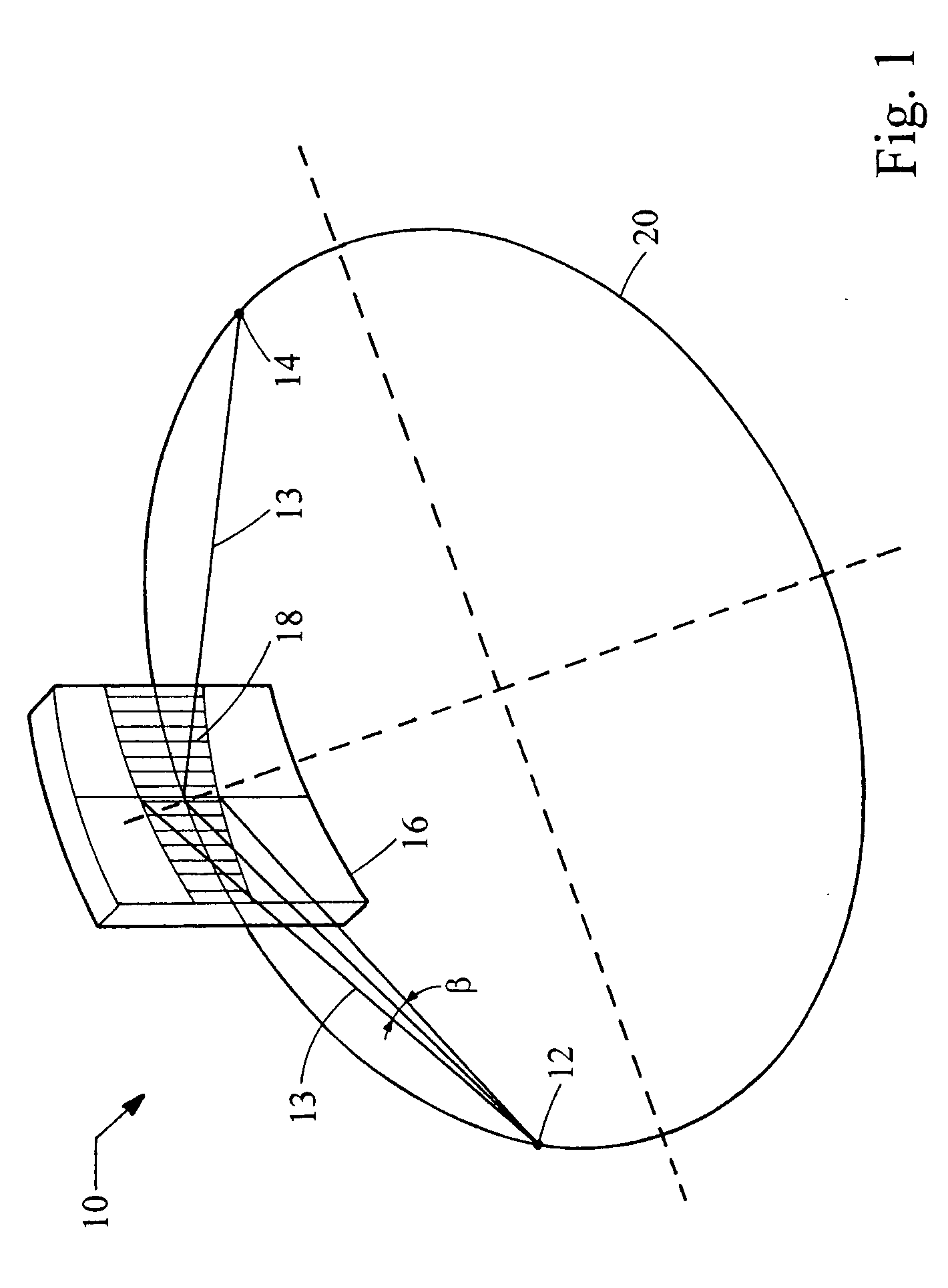Beam conditioning system
a beam conditioning and beam technology, applied in the field of xray optical systems, can solve the problems of low efficiency, low efficiency, and limited ability of multilayer optics to provide a high capture angle, and achieve the effect of high-flux operations
- Summary
- Abstract
- Description
- Claims
- Application Information
AI Technical Summary
Problems solved by technology
Method used
Image
Examples
Embodiment Construction
An analysis of the efficiency of various diffractive x-ray optical elements provides a basis for the understanding of the present invention. For simplicity, consider a single diffractive element with a cylindrical reflecting surface and with a capability to focus x-rays from a point source to the point image in the diffraction plane. Examples of such diffractive elements are Johansson crystals and elliptical multilayers with a proper grading of d-spacing. The capability of these optical elements to accept and redirect x-rays from a monochromatic x-ray source can be described as:
ε=f·α·β·R, (2)
where f is a factor describing from which portion of the source size a diffractive element can use radiation, α and β are the acceptance angles in the diffraction and axial planes, respectively, and R is the element reflectivity.
The efficiency of the source focal spot usage f can be calculated as a convolution of a source spatial intensity distribution and a diffractive element angular ac...
PUM
 Login to View More
Login to View More Abstract
Description
Claims
Application Information
 Login to View More
Login to View More - R&D
- Intellectual Property
- Life Sciences
- Materials
- Tech Scout
- Unparalleled Data Quality
- Higher Quality Content
- 60% Fewer Hallucinations
Browse by: Latest US Patents, China's latest patents, Technical Efficacy Thesaurus, Application Domain, Technology Topic, Popular Technical Reports.
© 2025 PatSnap. All rights reserved.Legal|Privacy policy|Modern Slavery Act Transparency Statement|Sitemap|About US| Contact US: help@patsnap.com



